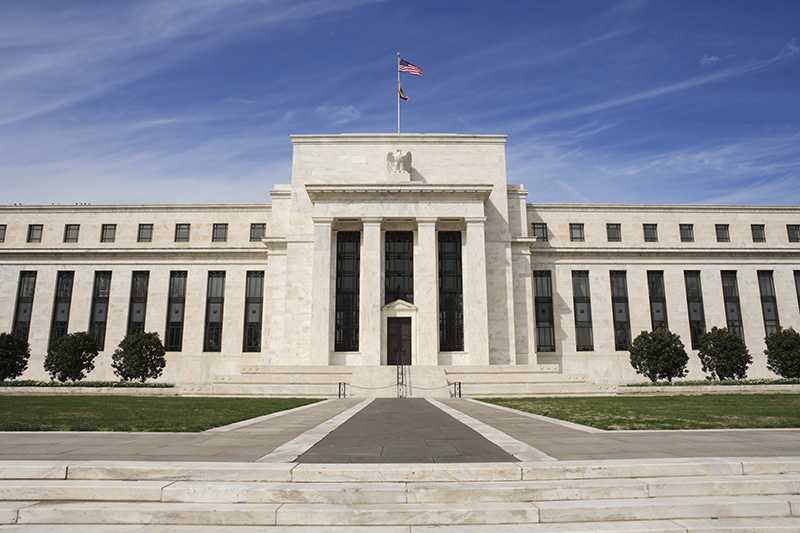Investing.com - The Federal Reserve raised interest rates by a quarter point on Wednesday, but pivoted toward a slower rate-hike cycle as the economy is expected to cool.
The Federal Open Market Committee raised the fed funds rate 25 basis points to a range of 2.25% to 2.5%.
The decision, while expected, was unwelcome news to the stock market. Equities rallied sharply leading up to the decision, with the Dow up around 300 points, But right after the market, the blue chip index and the broader market had given up all gains. As Federal Reserve Chairman Jerome Powell's press conference wore on, the dovish feeling flew out the window and selling snowballed, with the Dow down as much as 500 points.
"The Committee judges that some further gradual increases in the target range for the federal funds rate will be consistent with sustained expansion of economic activity, strong labor market conditions, and inflation near the Committee's symmetric 2 percent objective over the medium term," the Fed said in a statement.
Members of the rate-setting committee reduced their 2019 median forecast for interest rates to 2.9% from a previous estimate of 3.1%, hinting at two rates hikes in 2019. That's below the three rate hikes previously indicated in the Fed's September projections.
The interest-rate outlook for both 2020 and 2021 was lowered to 3.1% from 3.4%, which guides to one hike that year.
The longer run interest rate was also cut to 2.8% from 3.0%.
For decades the Federal Reserve has operated under a dual mandate seeking to achieve maximum employment, while ensuring inflation remains steady. But inflation and economic growth are expected to slow in the coming year, giving the Fed reason to rein in tightening.
The economy is expected to grow by 2.3% in 2019, down from 2.5% previously, and by 2.0% in 2020, the Fed's Summary of Economic Projections showed.
The pace of inflation, meanwhile, is forecast to cool to a rate of 2.0%, down from 2.1% previously. While core-PCE inflation for both 2019 and 2020 was also revised lower to 2.0 from 2.1%.
The most recent reading of the core PCE index, the Fed's preferred measure of inflation, came in at 1.8%, a notch below the central bank's 2% target.
The unemployment rate, which fell to a 49-year low in December, is expected to come in at 3.5% in 2019, unchanged from a prior forecast.
The rate hike comes as some had expected the Fed to pause in the wake of criticism from President Donald Trump, but Fed chief Powell downplayed any notion that the president could influence the central bank's decision on monetary policy.
"Political considerations play no role on our discussions on monetary policy," Powell said.
Trump earlier this week said the Fed would be making “yet another mistake” by raising rates and urged the central bank to "feel the market" rather than "go by the numbers."
